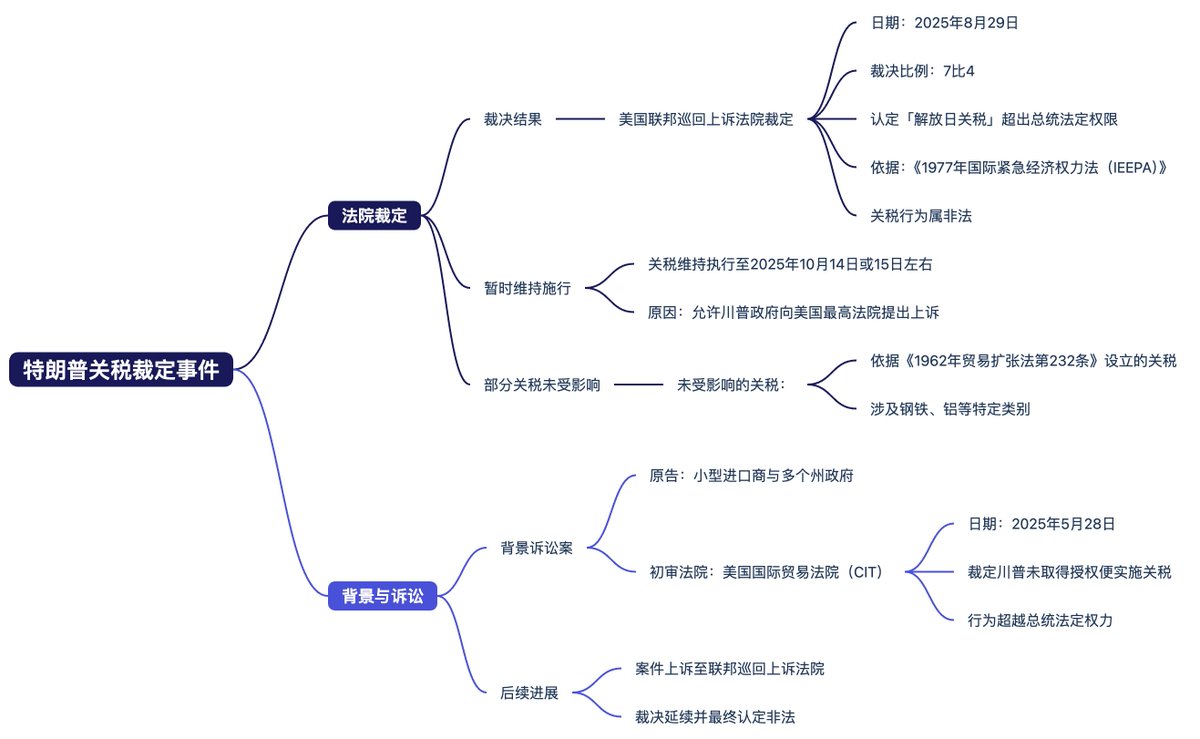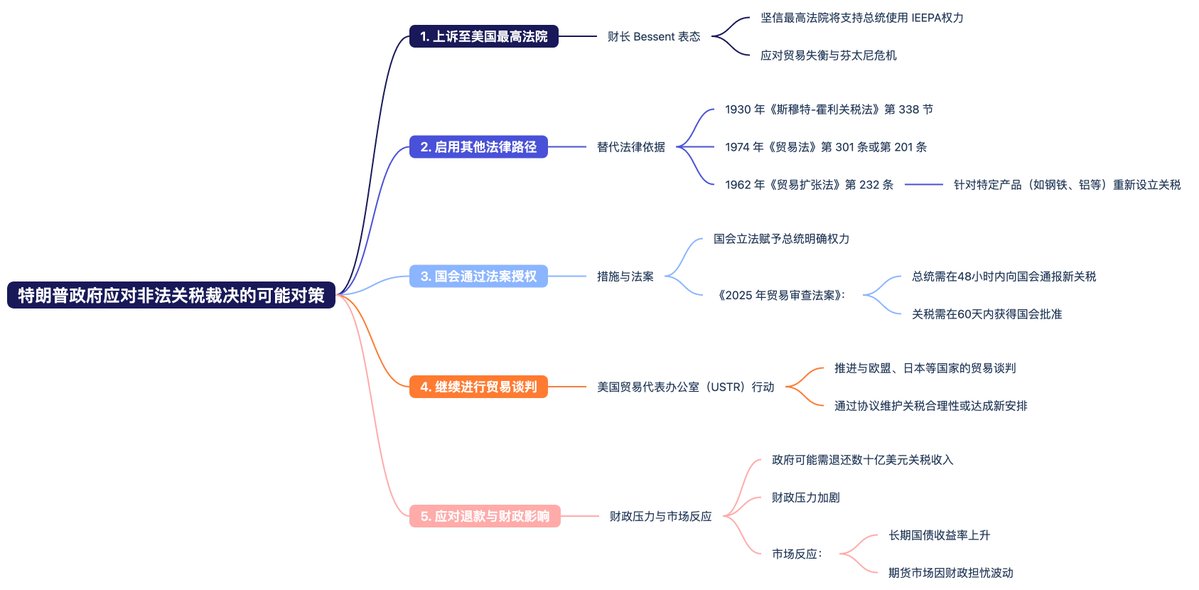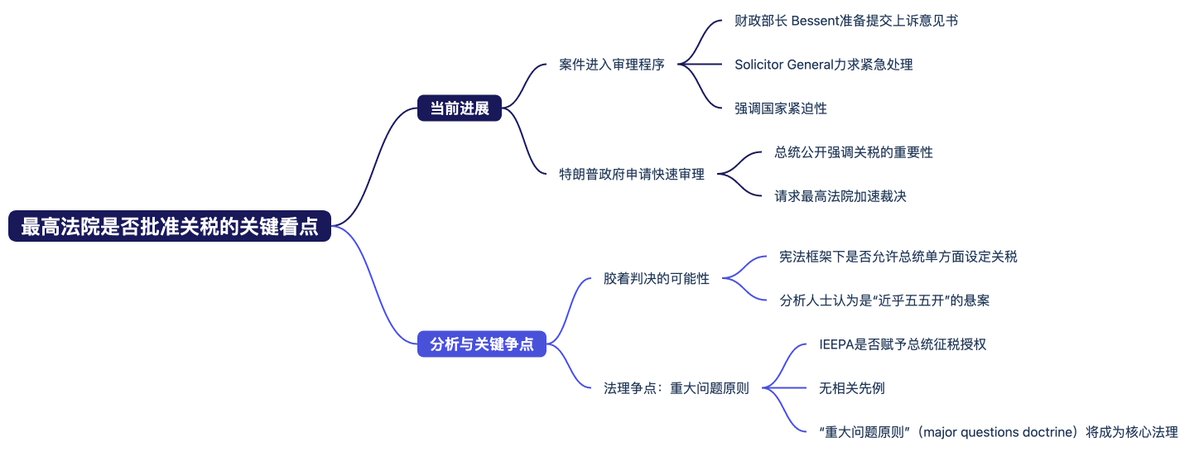What should be the next step for Trump's tariffs?
Recently, Trump has been troubled not only by the Federal Reserve but also by the tariff war he has led, which has not been a complete victory, especially within the United States. On August 29, 2025, the U.S. Court of Appeals for the Federal Circuit ruled 7 to 4 that most of the tariffs imposed by the Trump administration under the IEEPA exceeded the president's statutory authority and were therefore illegal. Although most countries have completed tariff negotiations, for Trump, tariffs represent an important new source of revenue and an effort to bring manufacturing back and increase the workforce.
Moreover, the biggest event during Trump's presidency, which consumed over half a year of manpower and resources, would have a significant impact on his influence if deemed invalid and canceled. This would also create strong uncertainty in the market. Consequently, after the U.S. stock market officially opened on Tuesday, a downward trend was observed, with many economists explaining that this was partly due to concerns about Trump's health and partly due to worries about the tariff situation. This could also inadvertently affect cryptocurrencies that benefit from Trump's policies, but the situation is not entirely without hope.
Although the ruling deemed the tariffs illegal, the court allowed these tariffs to remain in effect until around October 15, 2025, to give the Trump administration time to appeal to the U.S. Supreme Court. The ruling primarily targeted the "baseline" and "reciprocal" tariffs implemented under the IEEPA, while tariffs established under Section 232 of the Trade Expansion Act of 1962, which involve specific categories like steel and aluminum, remain valid and unaffected by this ruling. Therefore, Trump still has some opportunities to reverse the situation. Of course, before that, Trump appeared on a live broadcast from the White House at 2:30 AM on Wednesday and responded to questions about his health. During the broadcast, the decline in the U.S. market gradually rebounded.
Returning to the tariffs, Trump's main opportunity now is to appeal to the U.S. Supreme Court. Yesterday, Treasury Secretary Becerra expressed confidence that the Supreme Court would support the president's use of IEEPA powers in national emergencies, especially in addressing urgent issues like trade imbalances and the fentanyl crisis. Trump's team is also actively preparing a response plan to the tariff ruling and stated that an emergency meeting would be convened on Wednesday to formulate measures.
However, if the Supreme Court does not support the IEEPA, the government could consider Section 338 of the Smoot-Hawley Tariff Act of 1930 as an alternative measure. It might also re-establish or maintain certain tariffs based on different legal grounds, such as Section 301 or Section 201 of the Trade Act of 1974, or Section 232 of the Trade Expansion Act of 1962, particularly targeting specific products (like steel and aluminum). Of course, this option would be more complex and could lead Trump's team into a new round of tariff disputes, and the countries affected by the tariffs may not remain passive.
Additionally, Congress could enact legislative measures to grant the president explicit powers or request temporary authorization to legitimize such tariffs. The "2025 Trade Review Act" is an example; if passed, it would require the president to notify Congress of new tariffs within 48 hours and obtain congressional approval within 60 days. This is indeed a feasible option, but currently, there are already complicated negotiations within the Republican Party, not to mention the Democrats, making it quite difficult to return to legislative action in Congress.
Therefore, for Trump, the most straightforward way is still to obtain approval from the Supreme Court. Whether the Supreme Court will approve Trump's tariffs is currently an unresolved gamble. The Trump administration has already applied for expedited appeal, and Treasury Secretary Becerra even publicly stated that the Supreme Court will side with the president because this involves urgent issues of national security and the fentanyl crisis. However, from a legal standpoint, whether the president can unilaterally impose large-scale tariffs under the IEEPA has no precedent, and the Supreme Court may classify this under the "major questions doctrine," requiring clear congressional authorization, which means there is significant uncertainty in the ruling.
So, while Trump can choose other options, whether he can gain the Supreme Court's support is still a guarantee of the legitimacy of the tariffs. If support cannot be obtained, even if there are other routes to take, it will inevitably increase market uncertainty and lead to a decline in Trump's approval ratings and trust levels. Additionally, there would be a need to refund the tariffs already collected, which, although lacking precise statistical data, is estimated to be between $50 billion and $200 billion. If refunds are indeed required, it would be a significant blow to the U.S. treasury.
This article is sponsored by #Bitget | @Bitget_zh



免责声明:本文章仅代表作者个人观点,不代表本平台的立场和观点。本文章仅供信息分享,不构成对任何人的任何投资建议。用户与作者之间的任何争议,与本平台无关。如网页中刊载的文章或图片涉及侵权,请提供相关的权利证明和身份证明发送邮件到support@aicoin.com,本平台相关工作人员将会进行核查。




